
William de Lanvallei III (died 1217) was an English landowner, governor of Colchester Castle. [1] He was lord of Walkern, Hertfordshire. [2]

William de Lanvallei III (died 1217) was an English landowner, governor of Colchester Castle. [1] He was lord of Walkern, Hertfordshire. [2]
William III accompanied King John of England on his expedition to Poitou in 1214 and was present at the truce. William III was an enforcer of Magna Carta and was related to several of the Magna Carta barons (see "family" section below). [3]
William was the grandson of the founder of the family fortune, William de Lanvallai I, a Breton. William I (1125-1180), was an administrator for Henry II of England after his takeover of the duchy of Brittany in 1166. William served in the office for five years, crossing to England in 1171 or 1172. to become the king's castellan of Winchester. William I married Gunnora, the daughter of Hubert de Saint Clair (1120-1155).
William II (c.1161-1204), son of William I, married Hawise, great-granddaughter of Hugh de Bocland (Buckland, Oxfordshire). [4]
William III, son of William II, married Maud, daughter of Gilbert (Hamon) Peche. [1] [4] Maud was niece of Robert Fitzwalter, a leader of the Magna Carta barons. [3]
Hawise, daughter of William III, was placed as ward with Hubert de Burgh. Hubert married Hawise to his son, John. [1] [3]

Henry de Bohun, 1st Earl of Hereford of Pleshey Castle in Essex, was an Anglo-Norman nobleman who became Hereditary Constable of England from 1199.

Saer de Quincy, 1st Earl of Winchester was one of the leaders of the baronial rebellion against John, King of England, and a major figure in both the kingdoms of Scotland and England in the decades around the turn of the twelfth and thirteenth centuries.
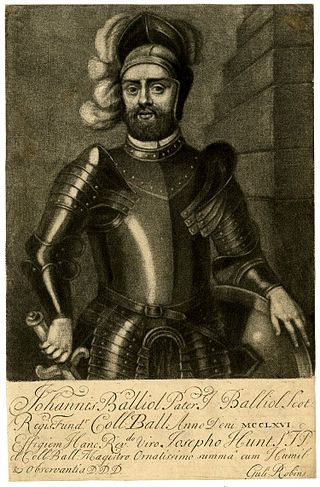
John de Balliol was an English nobleman, belonging to the House of Balliol. Balliol College, in Oxford, is named after him.
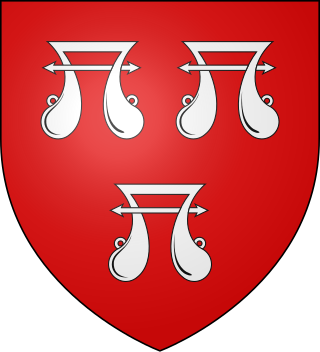
William Ros, 2nd Baron Ros of Helmsley, sometime spelled William Roos was the son of William Ros, 1st Baron Ros and Maud de Vaux.

Sir Robert de Ros was an Anglo-Norman feudal baron, soldier and administrator who was one of the twenty-five barons appointed under clause 61 of Magna Carta to monitor its observance by King John of England.
Richard de Clare, 3rd Earl of Hertford, feudal baron of Clare in Suffolk, and lord of Tonbridge in Kent and of Cardigan in Wales, was a powerful Anglo-Norman nobleman with vast landholdings in England and Wales.

Edmund Mortimer, 2nd Baron Mortimer of Wigmore was the second son and eventual heir of Roger Mortimer, 1st Baron Mortimer of Wigmore. His mother was Maud de Braose.

Ranulf de Blondeville, 6th Earl of Chester and 1st Earl of Lincoln, known in some references as the 4th Earl of Chester, was one of the "old school" of Anglo-Norman barons whose loyalty to the Angevin dynasty was consistent but contingent on the receipt of lucrative favours. He has been described as "almost the last relic of the great feudal aristocracy of the Conquest".

Fulk FitzWarin, variant spellings, the third, was a prominent representative of a marcher family associated especially with estates in Shropshire and at Alveston in Gloucestershire. In young life, early in the reign of King John (1199–1216), he won notoriety as the outlawed leader of a roving force striving to recover his familial right to Whittington Castle in Shropshire, which John had granted away to a Welsh claimant. Progressively rehabilitated, and enjoying his lordship, he endured further setbacks in 1215–1217.

Walkern is a village and civil parish in East Hertfordshire, England. It is about two miles (3 km) from Stevenage.

John Neville, 3rd Baron Neville, was an English peer, naval commander, and soldier. His second wife was Elizabeth Latimer who was the 5th Baroness Latimer in her own right.
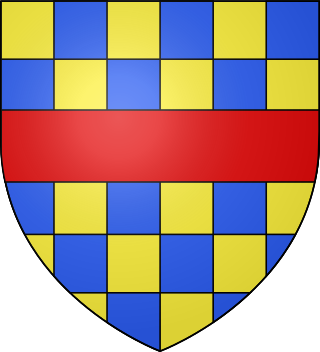
Thomas Clifford, 8th Baron de Clifford, also 8th Lord of Skipton, was the elder son of John, 7th Baron de Clifford, and Elizabeth Percy, daughter of Henry "Hotspur" Percy and Elizabeth Mortimer.

North Cadbury is a village and civil parish 5 miles (8 km) west of Wincanton, by the River Cam, in the Unitary Authority of Somerset, England. It shares its parish council with nearby Yarlington and its civil parish includes the village of Galhampton, which got its name from the settlement of the rent-paying peasants, and the hamlet of Woolston.

William Montagu, 2nd Baron Montagu, was an English peer, and an eminent soldier and courtier during the reigns of Edward I and Edward II. He played a significant role in the wars in Scotland and Wales, and was appointed steward of the household to Edward II. Perhaps as a result of the influence of his enemy, Thomas, 2nd Earl of Lancaster, Edward II sent him to Gascony as Seneschal in 1318. He died there in October of the following year.
Hawise of Chester, 1st Countess of Lincoln suo jure, was an Anglo-Norman noblewoman and a wealthy heiress. Her father was Hugh de Kevelioc, 5th Earl of Chester. She was the sister and a co-heiress of Ranulf de Blondeville, 6th Earl of Chester. She was created suo jure 1st Countess of Lincoln in 1232. She was the wife of Robert de Quincy, by whom she had one daughter, Margaret, who became heiress to her title and estates. She was also known as Hawise of Kevelioc.
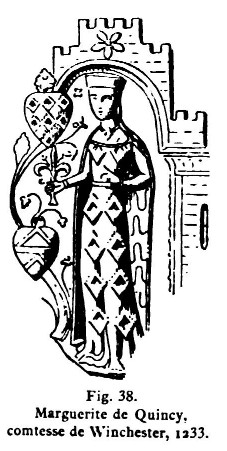
Margaret de Quincy, suo jure 2nd Countess of Lincoln was a wealthy English noblewoman and heiress having inherited in her own right the Earldom of Lincoln and honours of Bolingbroke from her mother Hawise of Chester, received a dower from the estates of her first husband, and acquired a dower third from the extensive earldom of Pembroke following the death of her second husband, Walter Marshal, 5th Earl of Pembroke. Her first husband was John de Lacy, 2nd Earl of Lincoln, by whom she had two children. He was created 2nd Earl of Lincoln by right of his marriage to Margaret. Margaret has been described as "one of the two towering female figures of the mid-13th century".
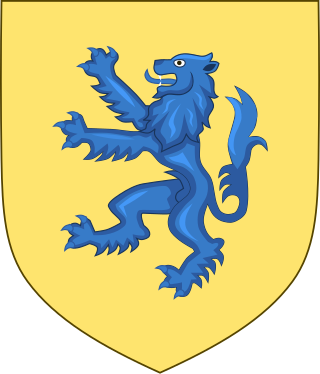
Henry Percy, 9th Baron Percy of Topcliffe, 2nd Baron Percy of Alnwick was the son of Henry de Percy, 1st Baron Percy of Alnwick, and Eleanor Fitzalan, daughter of Sir Richard FitzAlan, 8th Earl of Arundel, and sister of Edmund FitzAlan, 9th Earl of Arundel.

Edmund de Stafford, 1st Baron Stafford, was the son of Nicholas de Stafford, who was summoned to parliament by writ on 6 February 1299 by King Edward I. He was a signatory of the Baron's Letter to Pope Boniface VIII in 1301.
Sir Philip Despenser, Knt., of Goxhill, Lincolnshire was the son of Hugh Despenser, 1st Earl of Winchester and his wife, Isabella de Beauchamp, daughter of William de Beauchamp, 9th Earl of Warwick and Maud FitzJohn. He was born ca. 1290 in Stoke, Gloucester, England, and died on 24 September 1313. He married Margaret de Goushill, daughter of Ralph De Gousille and his wife Hawise Fitzwarine. Philip was brother to Hugh Despenser the Younger, a favorite of King Edward II.
Sir Hugh de Courtenay (1251–1292) was the son and heir of John de Courtenay, feudal baron of Okehampton, Devon, by Isabel de Vere, daughter of Hugh de Vere, 4th Earl of Oxford. His son inherited the earldom of Devon.